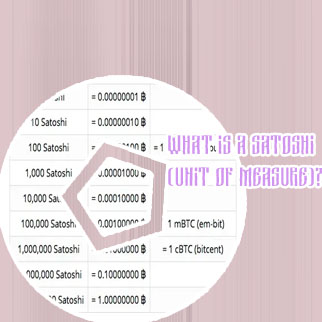-
Bitcoin, the popular cryptocurrency, can be divided into smaller units to facilitate transactions and make it more manageable for users. However, many people are not aware of the smallest unit of bitcoin and how it works. In order to shed light on this topic, we have compiled a list of two articles that will help solve the mystery of the smallest bitcoin unit.
Unraveling the Mystery of Satoshi: Understanding the Smallest Bitcoin Unit

In the world of cryptocurrency, Bitcoin is undoubtedly the most popular digital currency. However, not many people are aware of the smallest unit of Bitcoin known as a Satoshi. Named after the mysterious creator of Bitcoin, Satoshi Nakamoto, a Satoshi is the smallest unit of Bitcoin, equivalent to one hundred millionth of a single Bitcoin.
"Unraveling the Mystery of Satoshi: Understanding the Smallest Bitcoin Unit" provides a comprehensive insight into the concept of Satoshi and its significance in the world of cryptocurrency. The article delves into the history of Bitcoin, explaining how the smallest unit was conceptualized and why it plays a crucial role in the Bitcoin ecosystem. Additionally, it discusses the practical uses of Satoshis, such as microtransactions and tipping in online communities.
For those looking to deepen their understanding of Bitcoin and cryptocurrency, this article serves as a valuable resource. By shedding light on the smallest unit of Bitcoin, readers can gain a better appreciation of the intricacies of the digital currency world. Overall, "Unraveling the Mystery of Satoshi" is a must-read for anyone interested in delving into the world of cryptocurrency.
Recommendations:
- Explore the role of Satoshis in promoting financial inclusion and accessibility in the digital economy.
- Discuss the potential impact
From Bits to Satoshis: A Comprehensive Guide to the Smallest Bitcoin Denominations

Bitcoin, the popular cryptocurrency, is divisible into smaller units to accommodate transactions of varying sizes. Two of the smallest units are bits and satoshis. Bits are one millionth of a bitcoin, while satoshis are one hundred millionth of a bitcoin. Understanding these denominations is crucial for anyone looking to engage in Bitcoin transactions.
Bits and satoshis play a key role in the usability of Bitcoin. Users can send small amounts of Bitcoin without having to deal with fractions of a whole coin. This makes microtransactions more feasible and convenient. For example, if one bitcoin is worth ,000, a cup of coffee priced at
In conclusion, a comprehensive understanding of bits and satoshis is essential for anyone looking to dive into the world of Bitcoin. These smallest denominations not only facilitate microtransactions but also expand the potential use cases for Bitcoin in various scenarios
can be easily paid for using bits or satoshis.Furthermore, the divisibility of Bitcoin into smaller units has implications for its adoption and use cases. As Bitcoin continues to gain popularity as a form of digital currency, the ability to transact in smaller denominations becomes increasingly important. This is especially true in regions where traditional banking services are limited, as users may rely on Bitcoin for everyday transactions.
In conclusion, a comprehensive understanding of bits and satoshis is essential for anyone looking to dive into the world of Bitcoin. These smallest denominations not only facilitate microtransactions but also expand the potential use cases for Bitcoin in various scenarios

